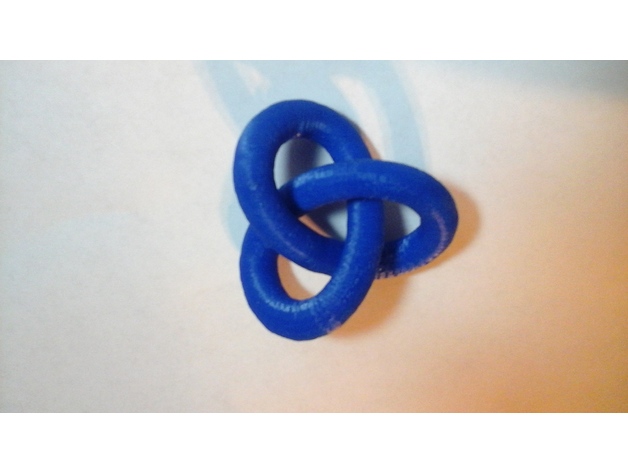
Trefoil Knot
thingiverse
A 3-D rendering of a trefoil knot is achieved by taking a parametric path representation and thickening it to form a solid, without making the knot self-intersect. The design starts in Sage, where it's exported to X3D, resulting in a file included here for reference. This file is then edited in Blender to remove artifacts left behind by Sage, such as a cube of lines around the figure. After editing, the file is exported to STL, imported into Cura, scaled because graph units in Sage become millimeters in Cura, and situated on a print platform. The STL file is then exported again to form the STL thing file here. The Sage code used to generate the figure is as follows: t = var('t'); parametric_plot3d([sin(t)+2*sin(2*t), cos(t)-2*cos(2*t), -1*sin(3*t)],(t,0,2*pi), thickness=50, aspect_ratio=1) Since Sage is Python-based, it's essential to check line breaks. The surface is defined parametrically and plotted using the parametric_plot3d() method with a large enough "thickness" setting to make the knot substantial. A nod of appreciation goes to artist M.C. Escher for his iconic work: http://www.mcescher.com/Gallery/recogn-bmp/LW444.jpg
With this file you will be able to print Trefoil Knot with your 3D printer. Click on the button and save the file on your computer to work, edit or customize your design. You can also find more 3D designs for printers on Trefoil Knot.
